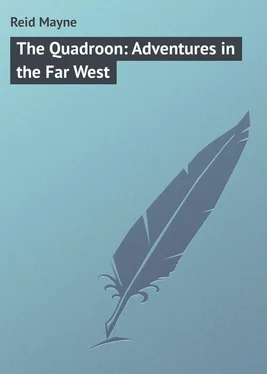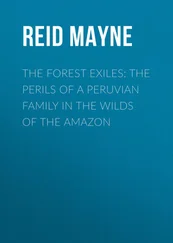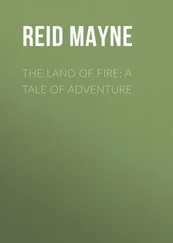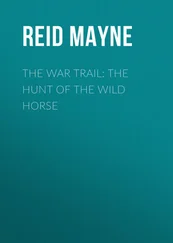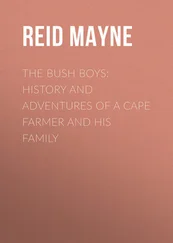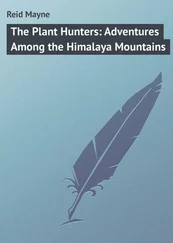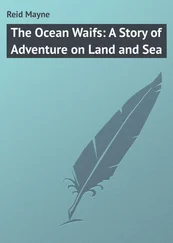Mayne Reid - The Quadroon - Adventures in the Far West
Здесь есть возможность читать онлайн «Mayne Reid - The Quadroon - Adventures in the Far West» — ознакомительный отрывок электронной книги совершенно бесплатно, а после прочтения отрывка купить полную версию. В некоторых случаях можно слушать аудио, скачать через торрент в формате fb2 и присутствует краткое содержание. Жанр: foreign_prose, foreign_adventure, на английском языке. Описание произведения, (предисловие) а так же отзывы посетителей доступны на портале библиотеки ЛибКат.
- Название:The Quadroon: Adventures in the Far West
- Автор:
- Жанр:
- Год:неизвестен
- ISBN:нет данных
- Рейтинг книги:3 / 5. Голосов: 1
-
Избранное:Добавить в избранное
- Отзывы:
-
Ваша оценка:
- 60
- 1
- 2
- 3
- 4
- 5
The Quadroon: Adventures in the Far West: краткое содержание, описание и аннотация
Предлагаем к чтению аннотацию, описание, краткое содержание или предисловие (зависит от того, что написал сам автор книги «The Quadroon: Adventures in the Far West»). Если вы не нашли необходимую информацию о книге — напишите в комментариях, мы постараемся отыскать её.
The Quadroon: Adventures in the Far West — читать онлайн ознакомительный отрывок
Ниже представлен текст книги, разбитый по страницам. Система сохранения места последней прочитанной страницы, позволяет с удобством читать онлайн бесплатно книгу «The Quadroon: Adventures in the Far West», без необходимости каждый раз заново искать на чём Вы остановились. Поставьте закладку, и сможете в любой момент перейти на страницу, на которой закончили чтение.
Интервал:
Закладка:
With regard to the historian, he indulges largely in those childish exaggerations so characteristic of the writers of the time. This remark applies, without exception, to all the old writers on American subjects – whether English, Spanish, or French – the chroniclers of two-headed snakes, crocodiles twenty yards long, and was big enough to swallow both horse and rider! Indeed, it is difficult to conceive how these old authors gained credence for their incongruous stories; but it must be remembered that science was not then sufficiently advanced “to audit their accounts.”
More than in anything else was I interested in the adventures and melancholy fate of La Salle; and I could not help wondering that American writers have done so little to illustrate the life of the brave chevalier – surely the most picturesque passage in their early history – the story and the scene equally inviting.
“The scene! Ah! lovely indeed!”
With such an exclamation did I hail it, when, for the first time, I sat at my window and gazed out upon a Louisiana landscape.
The windows, as in all Creole houses, reached down to the floor; and seated in my lounge-chair, with the sashes wide open, with the beautiful French curtains thrown back, I commanded an extended view of the country.
A gorgeous picture it presented. The pencil of the painter could scarcely exaggerate its vivid colouring.
My window faces westward, and the great river rolls its yellow flood before my face, its ripples glittering like gold. On its farther shore I can see cultivated fields, where wave the tall graceful culms of the sugar-cane, easily distinguished from the tobacco-plant, of darker hue. Upon the bank of the river, and nearly opposite, stands a noble mansion, something in the style of an Italian villa, with green Venetians and verandah. It is embowered in groves of orange and lemon-trees, whose frondage of yellowish green glistens gaily in the distance. No mountains meet the view – there is not a mountain in all Louisiana; but the tall dark wall of cypress, rising against the western rim of the sky, produces an effect very similar to a mountain background.
On my own side of the river the view is more gardenesque, as it consists principally of the enclosed pleasure-ground of the plantation Besançon. Here I study objects more in detail, and am able to note the species of trees that form the shrubbery. I observe the Magnolia , with large white wax-like flowers, somewhat resembling the giant nympha of Guiana. Some of these have already disappeared, and in their stead are seen the coral-red seed-cones, scarce less ornamental than the flowers themselves.
Side by side with this western-forest queen, almost rivalling her in beauty and fragrance, and almost rivalling her in fame, is a lovely exotic, a native of Orient climes – though here long naturalised. Its large doubly-pinnate leaves of dark and lighter green, – for both shades are observed on the same tree; its lavender-coloured flowers hanging in axillary clusters from the extremities of the shoots; its yellow cherry-like fruits – some of which are already formed, – all point out its species. It is one of the meliaceae , or honey-trees, – the “Indian-lilac,” or “Pride of China” ( Melia azedarach ). The nomenclature bestowed upon this fine tree by different nations indicates the estimation in which it is held. “Tree of Pre-eminence,” lays the poetic Persian, of whose land it is a native; “Tree of Paradise” ( Arbor de Paraiso ), echoes the Spaniard, of whose land it is an exotic. Such are its titles.
Many other trees, both natives and exotics, meet my gaze. Among the former I behold the “catalpa,” with its silvery bark and trumpet-shaped blossoms; the “Osage orange,” with its dark shining leaves; and the red mulberry, with thick shady foliage, and long crimson calkin-like fruits. Of exotics I note the orange, the lime, the West Indian guava ( Psidium pyriferum ), and the guava of Florida, with its boxwood leaves; the tamarisk, with its spreading minute foliage, and splendid panicles of pale rose-coloured flowers; the pomegranate, symbol of democracy – “the queen who carries her crown upon her bosom” – and the legendary but flowerless fig-tree, here not supported against the wall, but rising as a standard to the height of thirty feet.
Scarcely exotic are the yuccas , with their spherical heads of sharp radiating blades; scarcely exotic the cactacea , of varied forms – for species of both are indigenous to the soil, and both are found among the flora of a not far-distant region.
The scene before my window is not one of still life. Over the shrubbery I can see the white-painted gates leading to the mansion, and outside of these runs the Levee road. Although the foliage hinders me from a full view of the road itself, I see at intervals the people passing along it. In the dress of the Creoles the sky-blue colour predominates, and the hats are usually palmetto, or “grass,” or the costlier Panama, with broad sun-protecting brims. Now and then a negro gallops past, turbaned like a Turk; for the chequered Madras “toque” has much the appearance of the Turkish head-dress, but is lighter and even more picturesque. Now and then an open carriage rolls by, and I catch a glimpse of ladies in their gossamer summer-dresses. I hear their clear ringing laughter; and I know they are on their way to some gay festive scene. The travellers upon the road – the labourers in the distant cane-field, chanting their chorus songs – occasionally a boat booming past on the river – more frequently a flat silently floating downward – a “keel,” or a raft with its red-shirted crew – are all before my eyes, emblems of active life.
Nearer still are the winged creatures that live and move around my window. The mock-bird ( Turdus polyglotta ) pipes from the top of the tallest magnolia; and his cousin, the red-breast ( Turdus migratorius ), half intoxicated with the berries of the melia , rivals him in his sweet song. The oriole hops among the orange-trees, and the bold red cardinal spreads his scarlet wings amidst the spray of the lower shrubbery.
Now and then I catch a glimpse of the “ruby-throat,” coming and going like the sparkle of a gem. Its favourite haunt is among the red and scentless flowers of the buck-eye, or the large trumpet-shaped blossoms of the bignonia .
Such was the view from the window of my chamber. I thought I never beheld so fair a scene. Perhaps I was not looking upon it with an impartial eye. The love-light was in my glance, and that may have imparted to it a portion of its couleur de rose . I could not look upon the scene without thinking of that fair being, whose presence alone was wanted to make the picture perfect.
Chapter Twenty
My Journal
I varied the monotony of my invalid existence by keeping a journal.
The journal of a sick chamber must naturally be barren of incident. Mine was a diary of reflections rather than acts. I transcribe a few passages from it – not on account of any remarkable interest which they possess – but because, dotted down at the time, they represent more faithfully some of the thoughts and incidents that occurred to me during the remainder of my stay on the plantation Besançon.
July 12th . – To-day I am able to sit up and write a little. The weather is intensely hot. It would be intolerable were it not for the breeze which sweeps across my apartment, charged with the delicious perfume of the flowers. This breeze blows from the Gulf of Mexico, by Lakes Borgne, Pontchartrain, and Maauepas. I am more than one hundred miles from the Gulf itself – that is, following the direction of the river – but these great inland seas deeply penetrate the delta of the Mississippi, and through them the tidal wave approaches within a few miles of New Orleans, and still farther to the north. Sea-water might be reached through the swamps at a short distance to the rear of Bringiers.
Читать дальшеИнтервал:
Закладка:
Похожие книги на «The Quadroon: Adventures in the Far West»
Представляем Вашему вниманию похожие книги на «The Quadroon: Adventures in the Far West» списком для выбора. Мы отобрали схожую по названию и смыслу литературу в надежде предоставить читателям больше вариантов отыскать новые, интересные, ещё непрочитанные произведения.
Обсуждение, отзывы о книге «The Quadroon: Adventures in the Far West» и просто собственные мнения читателей. Оставьте ваши комментарии, напишите, что Вы думаете о произведении, его смысле или главных героях. Укажите что конкретно понравилось, а что нет, и почему Вы так считаете.
